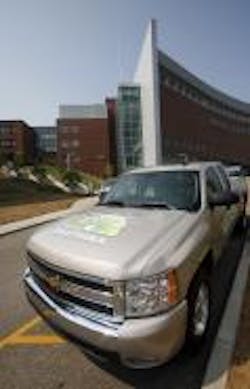“With [this program], California is embarking on a fundamental transformation of its transportation system to substantially decrease greenhouse gas emissions and petroleum use.” –James Boyd, vice chairman, California Energy Commission, on the golden state’s adoption of the group’s Alternative and Renewable Fuels and Vehicle Technology Program.
There’s been a saying lately in transportation circles (and not always a kindly one) that “as California goes, so goes the nation.” From mandating a wholesale switch to ultra low sulfur diesel (ULSD) to fuel economy standards, California has blazed a unique trail when it comes to the regulatory impact on its (and our nation’s) transportation strategy – a trail both liked and loathed in equal measure by truckers.
Now the golden state is adding a new wrinkle with the adoption of the California Energy Commission’s extremely far-reaching Alternative and Renewable Fuels and Vehicle Technology Program – a program that provides $176 million of funding over the next two years to “stimulate” green transportation projects and “encourage innovation” to help meet the state's aggressive climate change policies.
"Vehicles are the major contributor to global warming pollution [and] more than 38 percent of the carbon dioxide and other greenhouse gases in California come from burning gasoline and diesel in cars and trucks," noted James Boyd, the group’s vice chairman. “[This plan] promotes sustainable development. With it, California is embarking on a fundamental transformation of its transportation system to substantially decrease greenhouse gas emissions and petroleum use.”
California is making aggressive moves on a number of transportation fronts right now: working to reduce greenhouse gas emissions by 80 percent below 1990 levels by 2050, decrease petroleum fuel use to 15 percent below 2003 levels by 2020, and increase alternative fuel use to 20 percent by 2020.
Boyd noted that achieving these multiple objectives will require a portfolio of new fuels and vehicle technologies including electric drive and fuel cell vehicles, low-carbon biofuels, gasoline and diesel vehicles with far greater fuel economy, along with natural gas and propane vehicles.
That's why the Energy Commission's plan is using its share of the federal stimulus package money to expand the use of low carbon fuels and cleaner vehicles that are available today and open up the market for the more exotic technologies that are required in the future.
To accomplish those lofty goals, a lot of big bucks are goping to be spent over the next two years:
• Investing $46 million for electric vehicles, public charging stations, and manufacturing plants;
• Some $40 million for hydrogen fueling stations;
• About $12 million for advanced ethanol fuel production facilities and E-85 fueling stations;
• Another $43 million for natural gas vehicles, fueling stations and biomethane production facilities;
• However, only $6 million will be spent on advanced renewable diesel and biodiesel facilities, with just $2 million for propane vehicles.
The plan also directs $27 million go to fund workforce training programs, research, public education and technical assistance programs – over four times the amount being spent on renewable diesel infrastructure.
The big unknown right now is what mandates California might develop to help spur further development and use of all these different propulsion methods – and regulatory mandates are a favorite tool of the golden state.
Right now, for example, California’s truckers face several fuel-saving and emission-related mandates, including first-of-their-kind standards for trailer aerodynamics approved by the California Air Resources Board (CARB) this year that go into effect in stages beginning Jan. 1 2010: stating that most 53-foot dry vans operating in the golden state must be equipped with aerodynamic devices that improve fuel efficiency by at least 5%, while for refrigerated trailers the benchmark is 4%.
It remains to be seen if such regulatory mandates will play a future role in broadening the California Energy Commission’s alternative fuel program. What is for sure that it sure seems the golden state is firmly committed to this plan for the long haul.
